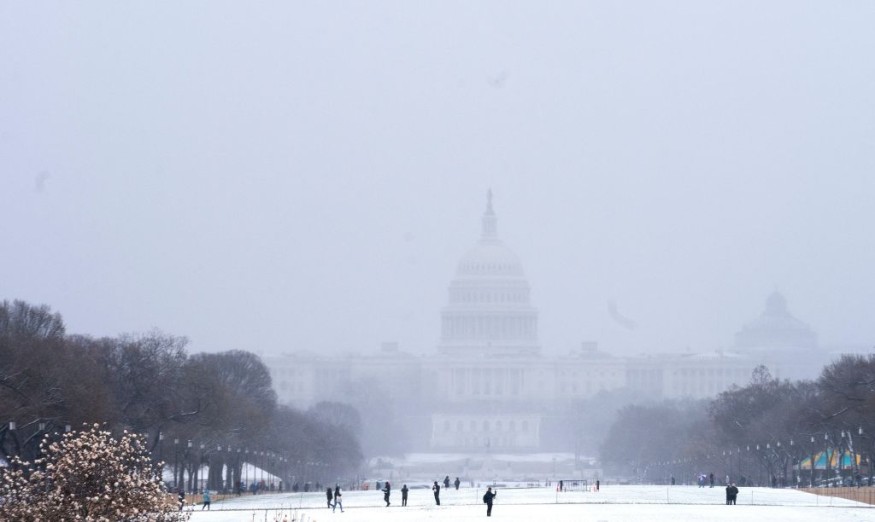Snow can still accumulate in spite of the arrival of the spring season in the United States on Sunday, March 20.
Weather forecasts indicated that 66% of the country is still prone to moderate to severe snowfall during the spring months; which usually brings warm and temperate weather conditions.
Meteorologists have predicted that multiple states in the northern and central parts of the country will be affected by winter-like weather conditions in the coming weeks until April.
The southern half of the US will reportedly have to wait for the next winter season in December to receive snow.
Over the past months, the US went through a rollercoaster of severe weather conditions, ranging between widespread winter storms, extreme thunderstorms, record-breaking heat, and deadly tornadoes.
As spring is officially starting soon, winter weather is still having its last run until April.
Spring with Winter Conditions

According to AccuWeather meteorologists, the US spring season will officially start at 11:33 a.m. EDT (local time) on Sunday.
However, their weather forecast warned that two-thirds of the US is still subjected to winter weather, including winter storms, snowstorms, and cold air.
A few more storms that resemble that of the winter season are still possible in the regions of the Pacific Northwest, southern Rockies, the Great Plains, and the Ohio Valley, said AccuWeather.
This indicated that the upper and middle parts of the country will be affected.
Meanwhile, waves of cold air will cover the cities of Chicago, Illinois; Detroit, Michigan; Pittsburgh, Pennsylvania; Boston, Massachusetts; and New York City, New York.
This weather phenomenon can reach even as far as the states of Oregon and Washington.
On the other hand, any areas below Philadelphia to D.C., as well as people living farther south such as in the Carolinas and the Gulf Coast are likely to be safe from winter storms and cold air.
Rainfall and Water Reservoir
Not only snow will occur in the coming weeks but moderate to heavy rainfall is also possible in most of the country, notably in the West and South.
This can be a chance for states with dry weather conditions and those prone to drought to fill up their water reservoirs before the summer season.
In August 2021, the US government declared its first official water shortage in the Lake Mead reservoir, which caused a large-scale lack of water supply in the Southwest, as per Reuters.
The announcement came after 10 state governors sought for federal drought disaster aid.
Lake Mead is the country's largest reservoir. As a result, its water shortage led to a series of major water cuts in Arizona and other states in the West in 2021.
One of the contributing factors for the shortage is the lack of sufficient rainfall during the summer season.
Drought is Getting Worse
There is mounting data from the latest prediction of US weather authorities and previous research on the worsening of drought and increasing warm temperatures because of climate change and global warming.
With this, the West and other parts of the US are at risk of another water shortage this year.
According to the National Oceanic and Atmospheric Administration (NOAA) - National Centers for Environment Information (NCEI) on Tuesday, March 15, 167 million people, or 53.7% of the US population are currently facing drought or abnormal dryness.
The NOAA - NCEI, during their March 15 report, showed that drought intensity is worsening and that "severe to exceptional drought" is increasing.
© 2025 NatureWorldNews.com All rights reserved. Do not reproduce without permission.





